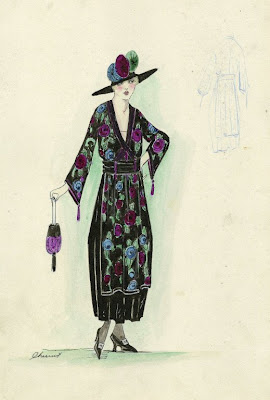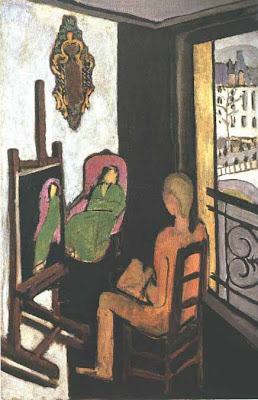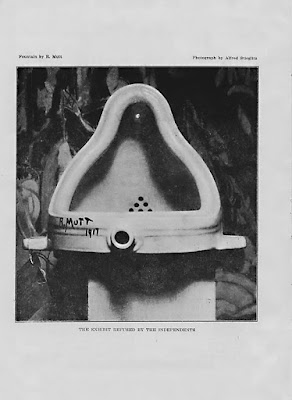
Al and Monroe Jockers, The Dixie Volunteers.
Erik Satie, Parade: Petite Fille Americaine.
Eubie Blake, Charleston Rag.
Harry Kandel's Orchestra, Freylekhs Fun Der Khupe.
Earl Fuller's Famous Jazz Band, A Coon Band Contest.
Frisco Jass Band, Johnson's Jass Blues.
Handy's Orchestra of Memphis, Fuzzy Wuzzy Rag.
The Original Dixieland Jazz Band, Ostrich Walk.
The great Russian revolution has realized women's boldest dreams. The first Provisional Government has acknowledged the civil and political equality of the women of Russia. This equality, which as yet has been realized nowhere in the world on such a scale, lays upon the Russian woman a huge responsibility. Corresponding to equal rights with men there must be equal obligations. Recognizing this, the Union of Women's Democratic Organizations and the All-Russian Union of Women have introduced for review by the Provisional Government a bill on drafting women for obligatory service.
Commission chair O. A. Nekrasova, provisional Russian government, 16 June 1917.
Citizenesses!
In this terrible hour, when the dark storm clouds of anarchy, defeat and economic collapse are gathering over our motherland, when death is foretold for her, we, women citizens with equal rights, are obliged to raise our voices, are obliged to unite and strain every nerve to come forward...
Imperative responsibility and civic duty call upon the Russian woman to support our army's unity of will, to strengthen the falling spirit of our troops [and], having entered into their ranks as volunteers, to transform the passive, standing front into an active, aggressive one.
Maria Bochkareva, May 1917.
Sworn to never surrender (hence the term "Legion of Death") it was published in the press that each woman soldier carried a ration of potassium cyanide to be used to commit suicide in the event of capture. This grim fact was also reflected in their shoulder straps, which were trimmed in black with a skull and crossbones insignia.
Christopher Eger, "The Russian Women's Legion of Death."

26th July 1917: Yasha [Maria] Bochkareva, a Siberian woman soldier had served in the Russian Army since 1915 side by side with her husband; when he had been killed, she continued to fight. She had been wounded twice and three times decorated for valour. When she knew the soldiers were deserting in large numbers, she made her way to Moscow and Petrograd to start recruiting for a Woman's Battalion. It is reported that she had said, "If the men refuse to fight for their country, we will show them what the women can do!" So this woman warrior, Yasha Bochkareva, began her campaign; it was said that it had met with singular success. Young women, some of aristocratic families, rallied to her side; they were given rifles and uniforms and drilled and marched vigorously. We Sisters were of course thrilled to the core.
13th August 1917: At dinner we heard more of the Women's Death Battalion. It was true; Bochkareva had brought her small battalion down south of the Austrian Front, and they had manned part of the trenches which had been abandoned by the Russian Infantry. The size of the Battalion had considerably decreased since the first weeks of recruitment, when some 2,000 women and girls had rallied to the call of their leader. Many of them, painted and powdered, had joined the Battalion as an exciting and romantic adventure; she loudly condemned their behaviour and demanded iron discipline. Gradually the patriotic enthusiasm had spent itself; the 2000 slowly dwindled to 250. In honour to those women volunteers, it was recorded that they did go into the attack; they did go "over the top". But not all of them. Some remained in the trenches, fainting and hysterical; others ran or crawled back to the rear.
Diary of Florence Farmborough, nurse working in Russia during the Revolution of 1917. The Women's Death Battalions were dissolved in November 1917 when the Bolsheviks seized power; Maria Bochkareva later fled to the United States.

In which the United States joins the big parade.
"The Dixie Volunteers" is by the brother act of Al and Monroe Jockers: The Jockers Brothers (Al, violin; Monroe, piano) had led a New York society orchestra earlier in the decade and Monroe, at least, cut records well into the '30s.
Recorded ca. November 1917 and released as Little Wonder 829; on Ragtime to Jazz Vol. 4.

Parade, debuting in Paris on 18 May 1917, is a modernist all-star production: music by Erik Satie, sets and costumes by Picasso, libretto by Jean Cocteau, choreography by Léonide Massine for the Ballets Russes, and program notes by Apollinaire (who coined the word "surrealism" in them).
The plot of Parade, such as it is, deals with relevance: how can an older art form, such as classical music or ballet, still draw an audience in the age of pop music, the cinema, and the gramophone? (Alex Ross.) Managers of a traveling show attempt to entice passersby via a number of sideshows, including a dancing "Little American Girl" (think Annie Oakley). Ross: The side acts prove so entertaining that the audience refuses to go inside. Low culture thus becomes the main attraction.
One movement, "Petite Fille Americaine," includes Satie's homage to/theft from Irving Berlin's "That Mysterious Rag." Performed here by Maurice de Abravanel and the Utah Symphony Orchestra.

Henri Bendel, Sketch HB 24-03.
In the early '70s, Michael Montgomery asked Eubie Blake to listen to some of Blake's oldest surviving piano rolls, which were being archived and recorded for a new LP. Blake was 90, and hadn't heard most of the rolls for over fifty years. Montgomery played him "Charleston Rag," a roll Blake had made ca. fall 1917.
Montgomery: Does that roll sound familiar, Eubie?
Blake: Yeah, but I do more tricks in it now then I did in those days.
The roll (Ampico 54174-E) was played on a 1910 Steinway 65/88 note player and recorded on 8 July 1972, in Detroit. Blake approved the tempo. (On Biograph's LP Eubie Blake 1917-1921, Blues and Ragtime Vol. 1; later on Greatest Ragtime of the Century).

Matisse, The Artist and His Model.
Carry on the war to win the peace--there's a formula that should certainly fulfill the wish of [Pope] Benedict XV.
Monsignor François-Marie-Anatole de Rovérié de Cabrières, cardinal and bishop of Montpellier, 28 August 1917.
Harry Kandel, born in Galicia in 1885, studied music in Odessa, played in the Czar's army band, and left for the United States around the time of the 1905 Revolution. He played vaudeville, worked in Buffalo Bill's Wild West show and in John Philip Sousa's orchestra. In his spare time, he helped invent modern klezmer.
In the recordings Kandel made as a bandleader, Kandel's clarinet often supplants the violin, the traditional leading instrument in klezmer, making the records something like second cousins to jazz (a link formalized when Benny Goodman remade Kandel's "Der Shtiler Bulgar" as "And the Angels Sing.")
Recorded in New York on 14 November 1917; on Victor 72475B (listed as "A freilachs von der chuppe") c/w "Oddessar Bulgarish"; on Klezmer 1910-1942.
(You can hear a possible (inadvertent?) klezmer influence in Ted Lewis' clarinet, on Earl Fuller's Jazz Band's "Coon Band Contest," recorded September of the same year--Victor 18394-B; in this archive.)

Duchamp, Fountain.
Jazz, before it was anything else, was a pop music fad. Here are three attempts to cash in:
The Frisco Jass Band was essentially Edison Records' (the stodgiest of the major labels) attempt to get a piece of jazz mania. The New York-based band was put together in early 1917 by Rudy Wiedoft, its name a bit of a misnomer, though a few members originally had come from California.
"Johnson's 'Jass' Blues" (named after its composer, the Frisco's band's pianist) was recorded 10 May 1917 in New York and released as Edison 50470 (and Blue Amberol 3254); find here.
W. C. Handy was 43 when he finally made records. Although the man had essentially laid the groundwork for jazz and blues, Handy had trouble keeping up with the latest convulsions, while Columbia's engineers did a poor job capturing the nuances of his proto-big band. Still in tracks like "Fuzzy Wuzzy Rag" you can hear "a gentle, wistful funk" (David Wondrich).
Recorded 21 September 1917 and released as Columbia A2421/Columbia 2910; find here.

A mere $1.50 gets you eccentric dancers, one of the first jazz bands in history, and dinner in the Futurist Room
Finally, the Original Dixieland Jazz Band, the 1917 equivalent of the Sex Pistols, or Elvis, or the Beatles--pick your analogy. The opening massed horn blast of "Ostrich Walk" sounds as if it was intended for electric guitars.
Recorded 24 November 1917 and released as Aeolian Vocalion A 1206 (the band had cut another version, slightly less manic, for Victor in February).
Next: Songmasonry (an occasional series)
No comments:
Post a Comment